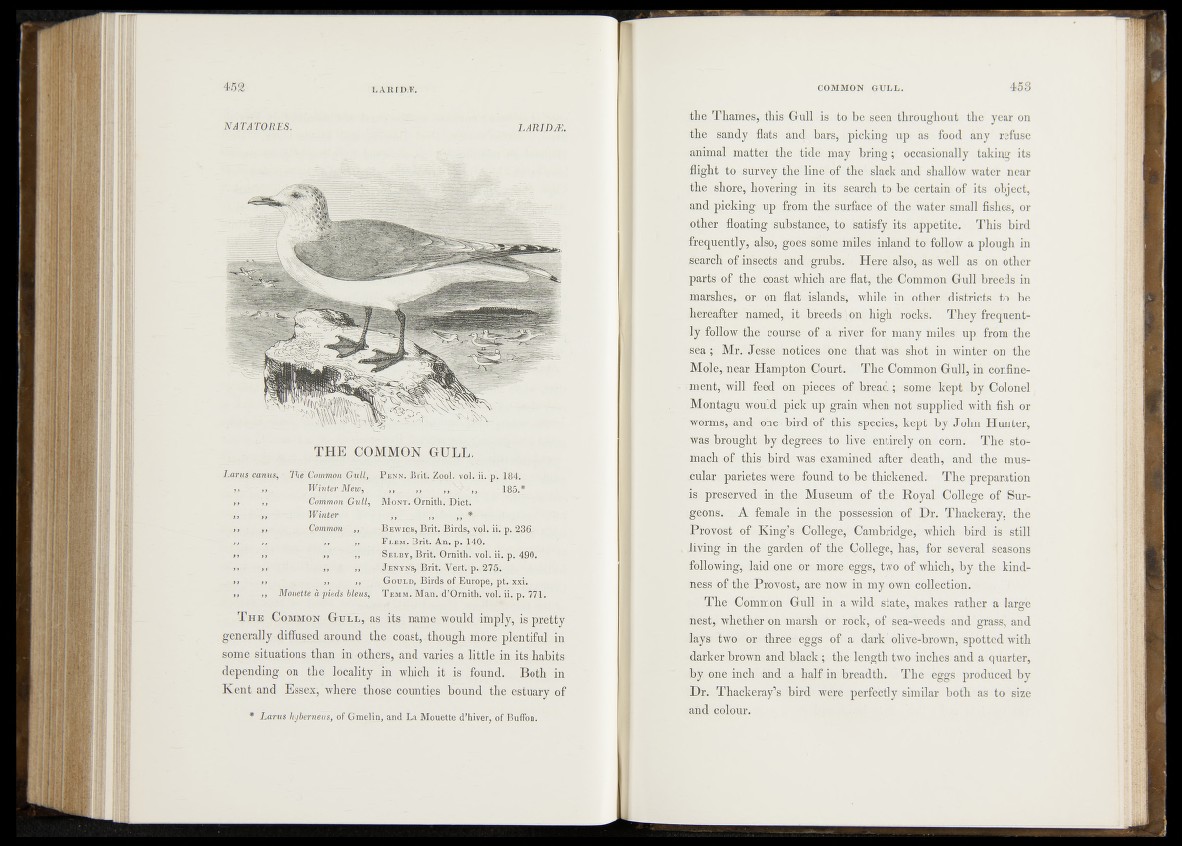
NATATORES. LAMDÆ
T HEjBOMM h HH
Lai‘üt5_çanws; 7Êë~Coznmon, p/ulj.,
y Wt f i f e r -MpWj „
Covümon ,Gull,
- Cowime» V,«",
,, Mouette à pieds bleus,
P'Ejjn.
• Ijfe*
#
- E ew io k -. iiV p,f^3j5.j j-
F£em. Brit/An. j j.T ® 'fy;î
jSM/Bt, Briv0rmth. vol*, ii. p.^ôOCf^’1
' jENYîfs, Brit. A7gr,£*p 4g75’.. \;~
Birds of .Europe, pt. xxi.
Temm.’ Ma'ffiM’Ofnith: v^ûirpi"^?!.
T h e C ommon G u l l , as its. name.would imply,yis pretty
generally .diffused around the coast,,though ihpreqplentiful in
some situations than in others, and varies a little in its habits
depending on the locality in which, it is found. Both in
Kent and Essex', where jthose .counties bound the estuary of
* L a r u s h y h e rn e u s , of Gmelih, aijd La Mouette d’hiver, of Bufifon.
the Thames, this Gull is to be seen throughout the year on
the sandy flats ant|. bars, picking up as food any refuse
animal matter the tide may bring ; occasionally taking its
flight to survey the line of the slack and shallów water near
the shore, hovering in its search to be certain of its object,
and peeking, up from thte surface of the water small fishes, or
pther floatmgi/substance, to satisfy its. appetite. This bird
frequently, also, goes some miles inland to follow a plough in
search ofiiifsects and grubs. Here also, as well as on other
.parts of the,.coast-which axe flat, the Common Gull breeds in
marshes, or on flat ,islands, while in other districts to be
hereafter .named, .‘iti.breeds^fm1 high rocks. They frequently.?
follow'the coursé ; of a river for many miles up. from the
Mr. Jesse, notices one,.that was shot in winter on the
M®ïe,«ssnear. Hampton The Common Gull, in confinei|
neiitj "will feed on ^piece's of biread ; some kept by Colonel
Mojatagu.would ' pick up grain when not supplied with fish or
worms, and^ ones bird of this species, kept by John Hunter,
was brought by degrees to live entirely on corn. The stomach
ofi/#Ms^bird was examined after death, and the muscular
pariefes^iwe®^ found to be thickened. The preparation
is preserved . in the Museum of the Royal College of Surgeons,
'_ïA' female in the possession; of Dr. Thackeray, the
Provo# of King’s • College, Cambridge, which bird is still
Jiving in the garden, of thé College, has, for several seasons
following, laid one prsi more eggs, two of which, by the kindness
of. the Provosti, are now in my own collection.
: ; The Comm oh Gull in a wild state, makes rather a large
nhstj. whether on marsh or rock, of sea-weeds and grass, and
lays two or three eggs of a dark olive-brown, spotted with
darker brown and black ; the length two inches and a quarter,
by one inch 4nd a half in breadth. The eggs produced by
Dr. Thackeray’s bird were perfectly similar both as to size
and colour.